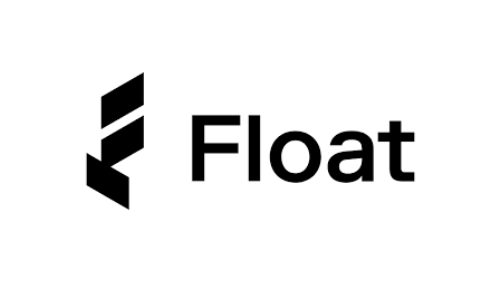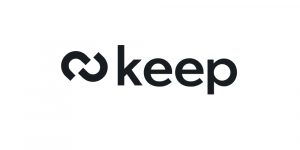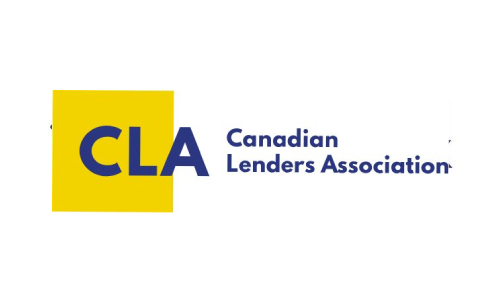Are Fintechs Winning Canada’s Business Banking Race?
Abstract: In this lively and candid panel, Tal Schwartz moderates a conversation with Rob Khazzam (Float) and Oliver Takach (Keep), two fintech founders revolutionizing Canadian business banking. Both companies, each serving over 4,000 customers, are tackling pain points faced by SMBs—ranging from lack of access to corporate credit cards to outdated banking infrastructure. They discuss how starting with “spend” (corporate cards) enabled rapid adoption and deeper integration into business workflows, leading to robust product expansion. While traditional banks are still critical partners, the founders highlight Canada’s regulatory complexity, cultural risk aversion, and legacy systems as major obstacles. Yet, both see a massive opportunity in modernizing financial services, driven by real-time responsiveness, automation, and a relentless focus on customer experience in a market where 98% of companies are small or mid-sized.


Tal Schwartz: This is a topic I’m pretty passionate about. I am Tal Schwartz. I write the Canadian Fintech Newsletter. I’m also one of the hosts of this conference.
We’re going to be talking about whether fintechs are winning Canada’s business banking race—a very cheeky panel title. I’m thrilled to be joined by two founder-CEOs representing companies that are definitely far along in that race: Rob Khazzam, CEO and co-founder of Float, and Oliver Takach, co-founder and CEO of Keep.
Let’s start with your businesses. What’s the story? What do Keep and Float do? And how did both of those companies begin?
Rob Khazzam: In 2021, my co-founders and I got together and what we saw in the Canadian finance industry was friction—a tremendous amount of friction for companies trying to do fairly basic things: borrow money, close their books, access capital, and process payments. Businesses were having a hard time spending money they already had and couldn’t focus enough on creating economic prosperity—building new products, investing in R&D, or expanding geographically.
We saw an opportunity to break down barriers between financial services, payments, and software. Right now, finance teams often use 17 different tools. Our vision was to build an end-to-end financial platform where companies can access capital, manage business banking, process payments, and achieve true financial automation. That’s what Float has been up to. We’re about four years old. We serve 4,000 customers across Canada with products including corporate cards, a financial management platform, FX credit, and bill pay.
Oliver Takach: We started Keep because I had been a two-time Y Combinator founder and had also bootstrapped and sold a company. One of the biggest problems I had when starting out was sitting in Vancouver with lots of customers and growth—but we were all using my personal credit card. I went into a bank and said, “We have revenue, clients, money coming in. Can I get a corporate card?” They said no. We also had a lot of U.S. customers, and they didn’t understand SWIFT codes. They would ask, “Doesn’t the world run on ACH?”
Finally, what really frustrated me was our bookkeeper and accounting firm sending me weekly to-do lists to perform in my own bank account. I thought, aren’t they supposed to reduce my administrative burden?
So we asked: what if we solved those three problems? Get a business credit card with the right settings and controls, enable global money movement, and eliminate being the admin for your own bookkeeper. I reached out to 200 potential customers. All of them said yes—and many used the same negative language to describe their financial institutions. That gave me the validation to go forward.
Nine months later, we launched one of the first business credit cards in Canada. Today, Keep offers business credit cards for small businesses regardless of traditional creditworthiness, supports multi-currency accounts in 36 currencies, enables global money movement, and removes the admin burden for bookkeeping.
Tal Schwartz: Can you give us a sense of scale for both businesses? Where are Keep and Float at today?
Rob Khazzam: We serve 4,000 customers across Canada and process a couple of billion dollars in annual payment volume.
Oliver Takach: We also serve 4,000 Canadian customers. We are multi-product, so TPV isn’t the only metric for us. We have customers storing funds, earning through us, and spending through us.
Tal Schwartz: Both of you are serving similar customer segments. What does it say about the state of small business banking in Canada that two of the fastest-growing fintechs can pursue the same market?
Rob Khazzam: It’s extremely early. Even combining our customer bases and volumes, the overall market penetration is still low. This is the first inning of a nine-inning game. The range of customer problems is only increasing—made worse by macroeconomic headwinds.
Recent advances in AI and tech further prove that the traditional model of banks plus external software is outdated. The future is an integrated approach. In OECD countries, it’s unacceptable for it to take 10 days to send $10,000. You can’t build a winning economy this way. Other countries are innovating—we need to catch up.
Tal Schwartz: Some people say the Canadian SMB market is too small. That it’s a winner-take-all scenario. What’s your response?
Rob Khazzam: 98% of Canadian companies are SMBs. There are only a handful of large companies in the country. Canada isn’t producing more of them. SMBs are the future and drive 90% of the economy. Whether they work with Float or Keep doesn’t matter—if the GDP rises, we all benefit. Over the last decade, GDP per capita and productivity have stagnated. Companies like ours can help move that needle.
Oliver Takach: There are 1.2 million employer businesses and 2.5 million self-employed businesses in Canada. That’s huge. SMBs don’t think of themselves as “small”; they think about serving customers and keeping their teams employed. If you view it as a financial operating system, the value opportunity becomes 10 times larger. And yes, the TAM is enormous—one of the biggest in the world.
Tal Schwartz: Let’s talk product. Business banking is complex—payments, payroll, tax. Why did you both start with cards?
Oliver Takach: You can start with earning, storing, or spending. We chose “spend” because it’s the easiest to drive customer switching and immediate value. We have no sales team; marketing alone has been effective. Once spending begins, you get data and workflows—receipts, expense management, accounting integration. It’s a Trojan horse into richer data, underwriting, and cross-selling. We’ve now expanded into “store” and are soon launching “earn.”
Tal Schwartz: At what point can companies abandon the traditional banking system altogether and move to fintech?
Rob Khazzam: It’s not binary. Customers often migrate over time. Large businesses have complex banking relationships—term loans, mortgages, etc. But it’s already happening. Float’s early customers were all startups. Now, 85% aren’t. They’re manufacturers, service firms, etc. The shift is accelerating, especially with AI and automation reshaping everything.
Tal Schwartz: So how do you view your relationships with banks—competitors, partners, enablers?
Oliver Takach: All of the above. Our biggest competitor is still the personal credit card. That’s what we’re replacing. Most customers don’t even get approved for business credit cards. Partners like Peoples have been essential in helping us launch. We’re not trying to kill banks—we’re trying to serve business owners.
Rob Khazzam: Agreed. We partner with multiple banks—some power us, some bank us, some underwrite. One wants to acquire us; others want to partner. Fintech in 2025 can’t be built without partnerships. We’re focused on the customer experience and managing backend complexity ourselves. Banks are often eager to power fintech experiences—they just need the right opportunity.
Tal Schwartz: Can you name names?
Rob Khazzam: Not yet. But we’re in open talks with several banks about powering new products. They want to sharpen their pencils and work with us on roadmaps. We’re open to it.
Tal Schwartz: Let’s zoom out. You’ve both built in the U.S. and abroad. What’s unique—hard or weird—about building financial products in Canada?
Oliver Takach: If every startup were a circus act, Canadian fintech founders would be the plate spinners—balancing 100 spinning plates while being wrestled mid-act. No founder in any other country I’ve spoken to describes their work this way. You have to rebuild infrastructure, plumbing, and connective tissue for every product.
Rob Khazzam: I love that analogy. People underestimate the complexity. Coding a product is easy. Money movement, licensing, and multi-jurisdiction compliance is where it gets hard. Canada has no open banking. The system is archaic. When we raised our Series B, our lawyers questioned the wire size for $50 million. We had to wait three days to confirm it landed.
Culturally, the biggest challenge is risk aversion. Everyone adds friction “just in case.” That adds up to broken customer experiences. We need operational efficiency. Our team is obsessed with reducing delay in processes like document collection or onboarding.
Oliver Takach: I’m best friends with my notary.
Rob Khazzam: Exactly. Everyone means well, but the cumulative effect is massive. Interest rates and inflation make capital efficiency critical. Right now, finance teams budget 10 calendar days for a payment to land. That’s dead capital. It can’t earn, can’t offset payables. The opportunity cost is enormous.
Oliver Takach: Our North Star metric for onboarding is what I call the “potty application.” Can someone apply and be underwritten before they flush?
Rob Khazzam: Same. We try to operate with unreasonable internal standards. 24/7/365. If we get a support query, we respond within one minute. If not, we’ve failed. Businesses don’t operate nine-to-five. Neither can we. Payments fail? Engineers are up, Christmas Eve or not.
That’s the level of accountability global competitors have. If Canadian companies want to stay competitive, this mindset is non-negotiable.
Tal Schwartz: Thank you both for being so transparent and passionate. It’s an honor to have you. Please join us again.
Here are 10 key insights from the panel:
-
SMB Banking in Canada Is Still in Early Stages
Despite serving 4,000+ clients each, both Float and Keep agree we’re in “inning one of a nine-inning game.” The Canadian business banking landscape remains underdeveloped and full of friction—especially for SMBs, which make up 98% of the economy.
-
Fintechs Are Building Financial Operating Systems, Not Just Products
Both companies are focused on end-to-end solutions—from spend to store to earn—aiming to replace fragmented banking stacks with integrated financial platforms that automate core finance workflows.
-
Cards as the Trojan Horse for Fintech Growth
Both Float and Keep started with business credit cards to drive quick adoption and generate data. “Spending” unlocks insights into cash flow, accounting, and risk—enabling expansion into broader offerings like multi-currency accounts and bill pay.
-
Canada’s Infrastructure Is Archaic
Wire transfers take days, onboarding is cumbersome, and fintechs must rebuild basic infrastructure from scratch due to lack of open banking. This slows innovation and burdens founders with complex compliance and integrations.
-
The Real Competition Is Still the Personal Credit Card
Despite being business-focused, the biggest competitor to fintech platforms remains the founder’s or employee’s personal credit card—highlighting how underserved the business segment still is.
-
Fintech-Bank Relationships Are Symbiotic, Not Adversarial
Both founders view banks as a mix of enablers, partners, and future acquirers. They rely on bank partnerships for underwriting and infrastructure, while offering superior user experiences on the front end.
-
Canadian SMB Market Is Larger Than Critics Think
With over 3.7 million businesses in Canada (employers + sole proprietors), the panel pushed back against the notion that the TAM is too small—especially when viewed through the lens of software-enabled financial automation.
-
Cultural Risk Aversion Is a Barrier to Innovation
Canada’s risk-averse culture results in redundant friction and slower onboarding. Every layer of “just in case” compliance adds to poor UX and lost opportunity, making automation and capital efficiency harder to achieve.
-
Fintechs Are Setting New Standards for Responsiveness and Reliability
Support SLAs like 1-minute response times, 24/7/365 operations, and immediate resolution—even on holidays—are seen as essential to compete with global fintechs and serve businesses that don’t stop at 5 p.m.
-
Winning in Fintech Requires Extreme Customer-Centricity
Both founders emphasized building for real business pain: faster onboarding, easier payments, reduced admin burden, and integrated systems. The ultimate goal? Apply for a card and be approved before you flush.
Sign up for the CLA Finance Summit Series






